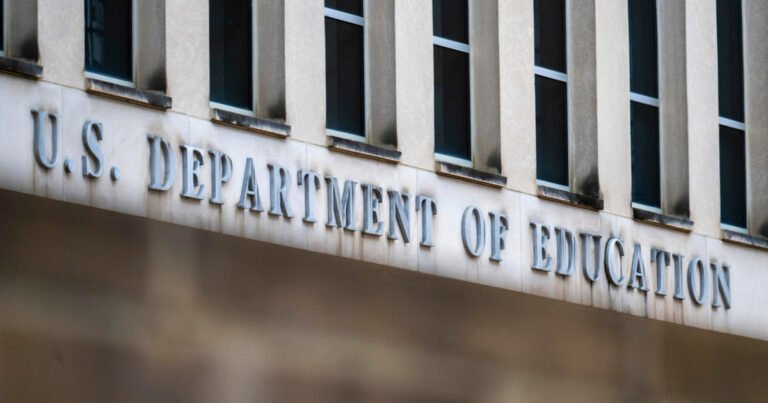Following public outcry, the U.S. Department of Education has restored funding for students who have both hearing and vision loss, about a month after cutting it.
But rather than sending the money directly to the four programs that are part of a national network helping students who are deaf and blind, a condition known as deafblindness, the department has instead rerouted the grants to a different organization that will provide funding for those vulnerable students.
The Trump administration targeted the programs in its attacks on diversity, equity and inclusion; a department spokesperson had cited concerns about “divisive concepts” and “fairness” in explaining the decision to withhold the funding.
ProPublica and other news organizations reported last month on the canceled grants to agencies that serve these students in Oregon, Washington and Wisconsin, as well as in five states that are part of a New England consortium.
Programs then appealed to the Education Department to retain their funding, but the appeals were denied. Last week, the National Center on Deafblindness, the parent organization of the agencies that were denied, told the four programs that the Education Department had provided it with additional grant money and the center was passing it on to them.
“This will enable families, schools, and early intervention programs to continue to … meet the unique needs of children who are deafblind,” according to the letter from the organization to the agencies, which was provided to ProPublica. Education Department officials did not respond to questions from ProPublica; automatic email replies cited the government shutdown.
When the funding was canceled, the programs were in the middle of a five-year grant that was expected to continue through September 2028. The funding from the center is only for one year.
“We don’t know what will happen” in future years, said Lisa McConachie of the Oregon DeafBlind Project, which serves 114 students in the state. McConachie said that with uncertain funding, her agency had to cancel a retreat this fall that had been organized for parents to swap medical equipment, share resources and learn about services to help students when they get older. She hopes to reschedule it for the spring.
“It is still a disruption to families,’’ she said. “It creates this mistrust, that you are gone and back and gone and back.”
Oregon’s grant application for its deafblind program, submitted in 2023, included a statement about its commitment to address “inequities, racism, bias” and the marginalization of disability groups, language that was encouraged by the Biden administration. It also attached the strategic plan for Portland Public Schools, where the Oregon DeafBlind Project is headquartered, that mentioned the establishment of a Center for Black Student Excellence — which is unrelated to the deafblind project. The Education Department’s letter said that those initiatives were “in conflict with agency policy and priorities.”
An advocate for deafblind students said he was happy to see the funding restored but called the department’s decision-making “amateurish” and disruptive to students and families. “It is mean-spirited to do this to families and kids and school systems at the beginning of the year when all of these things should be so smooth,” said Maurice Belote, co-chair of the National DeafBlind Coalition, which advocates for legislation that supports deafblind children and young adults.
Grants to the four agencies total about $1 million a year. The department started funding state-level programs to help deafblind students more than 40 years ago in response to the rubella epidemic in the late 1960s. Nationally, there are about 10,000 children and young adults, from infants to 21-year-olds, who are deafblind and more than 1,000 in the eight affected states, according to the National Center on Deafblindness.
While the population is small, it is among the most complex to serve; educators rely on the deafblindness programs for support and training.

